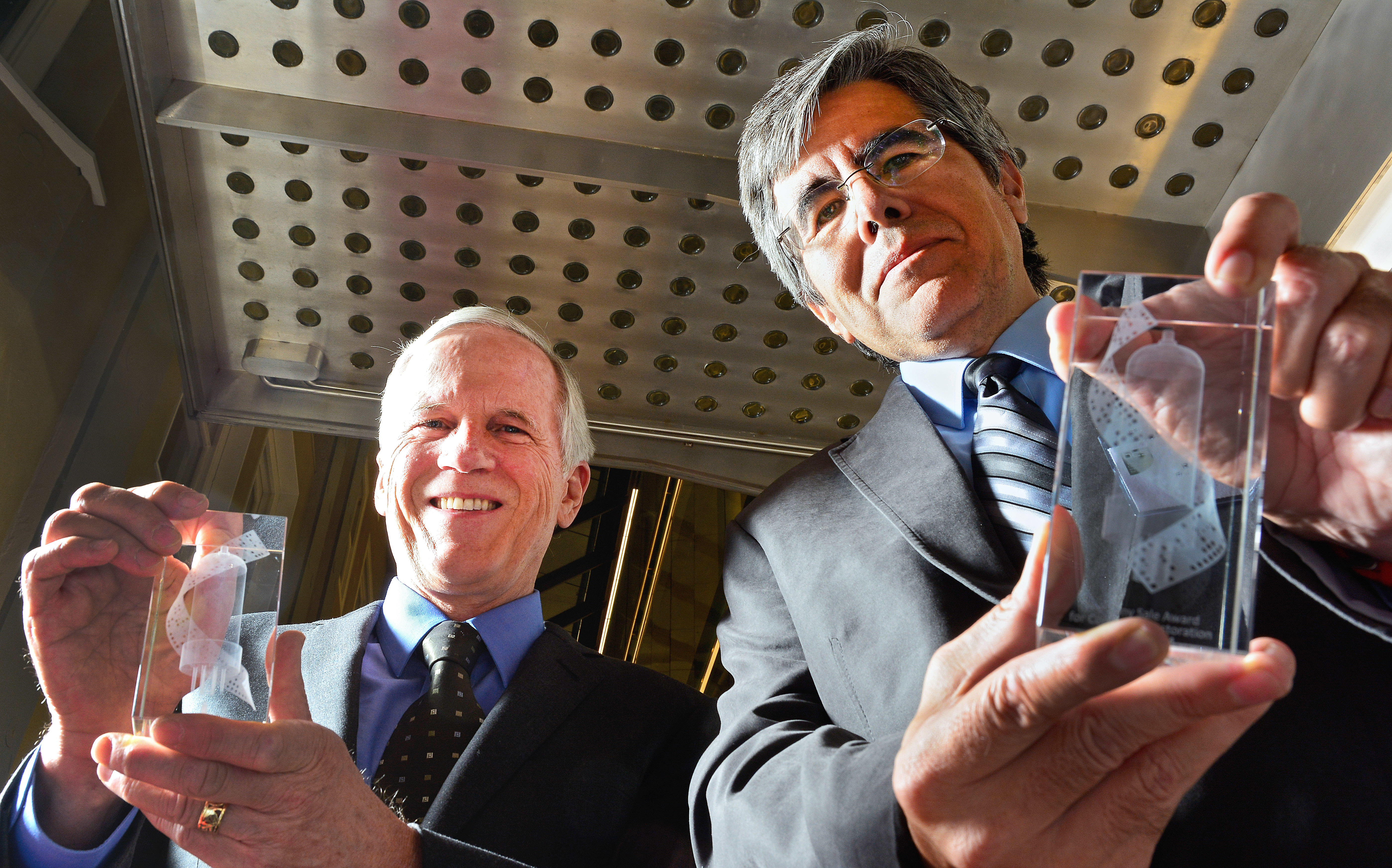British Computer Conservation Society Honors Computer Science Professor Raúl Rojas from Freie Universität Berlin
Tony Sale Award for Rojas's Contributions to the History of Computer Science
№ 390/2014 from Nov 10, 2014
Computer science professor Raúl Rojas from Freie Universität Berlin has been recognized by the British Computer Conservation Society. The Society – a joint association of the British Computer Society and the Science Museum in London – honored Rojas with the 2014 Tony Sale Award. The award ceremony took place in London. The award was given for Rojas's outstanding contributions to the history of computer science, in particular with regard to the technical and theoretical reconstruction of major computing machines. Robert Garner from the Computer History Museum in California was the co-winner.
In 2012 and 2013 Professor Rojas was the first scientist to decode the architecture and mode of operation of Konrad Zuse's Z1 computing machine. He published the results. Konrad was an inventor in Berlin, and between 1936 and 1938 he built the mechanical Z1 machine in his parents' apartment in Berlin-Kreuzberg. It was the first programmable calculator in the world. The original, however, was lost in a bombing raid over Berlin. In the 1980s, Zuse, in cooperation with the German Museum of Technology in Berlin, built a reconstruction of the machine. The reconstructed Z1 was inaugurated in 1989 and is now in the computer history section of Berlin's Museum of Technology. Zuse, however, left no technical explanation of how to operate the mechanical components of his Z1. When he passed away in 1995, he took the secret of how the thousands of components of the Z1 operated and interacted to his grave.
In 1994, Raúl Rojas received a copy of Zuse's patent application for the Z3 computing machine, the successor to the mechanical Z1. The Z3 was built with telephone relays. In 2001 computer scientists from Freie Universität Berlin, working in collaboration with computer scientists at the Fritz Haber Institute of the Max Planck Society, built a reconstruction of the Z3 with mini relays. Gaining an understanding of the Z3 was an important step in deciphering the Z1. In 1998 Rojas published a book with Springer in which he described the process. Finally he analyzed the blueprints and documents regarding the Z1 that are preserved among Zuse's papers in the Deutsches Museum in Munich and those in the archives of the Berlin Museum of Technology. In 2013 Professor Rojas was able to explain the architecture of the Z1 in several different essays.
An Internet portal devoted to the Z1 was created at Freie Universität in cooperation with the Konrad Zuse Center and the Deutsches Museum in Munich. It includes simulations of the mechanical components of the Z1 as well as many images, thus allowing a virtual tour. The simulations were made as part of final papers done by students working on their degrees in computer science. The virtual tour was created in conjunction with the Technology Enhanced Textbook project at the Department of Physics at Freie Universität.
The Computer History Museum in California received the other half of the award for its reconstruction of the IBM 1401, one of the most important electronic computing machines in the history of information technology. The award ceremony took place in London in the offices of the British Computer Society, the Association of Computer Specialists in Great Britain.
Further Information
Prof. Dr. Raúl Rojas, Department of Mathematics and Computer Science, Freie Universität Berlin, Tel.: +49 30 838-75102, Email: rojas@inf.fu-berlin.de
Press Image
This photo is available for media representatives to download. There is no charge, provided it is used in the context of the press release and the source © John Robertson is given.
Caption:
Prof. Dr. Raúl Rojas, Intelligent Systems and Robotics Group, Department of Mathematics and Computer Science, Freie Universität Berlin, and Robert Garner, Computer History Museum in California, are this year's winners of the prestigious Tony Sale Award of the British Computer Conservation Society. © John Robertson

